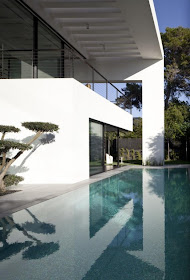B
PITSOU KEDEM
HAIFA HOUSE 2008 - 2011
PITSOU KEDEM
HAIFA HOUSE 2008 - 2011
A private residence built in the center of a historic avenue and at the very heart of Haifa’s French Carmel neighborhood.
AA
A
A
A
A
A
A
A
A
A
A
PITSOU KEDEM
Pitsou Kedem
Architects was founded in 2002 and today employs eight architects (Irene
Goldberg, Nurit Ben Yosef, Raz Melamed, Noa Groman, Ran Broides, Hila Sela,
Omer Dagan, Tamar Berger).
The office was
established by Pitsou Kedem, a graduate of the Architectural Association in
London and mentor of final projects at the Technion Hafia’s Faculty of
Architecture.
In the past two
years, the office has received five awards in the Israeli “Design Award”
competition, and has been chosen Architect Office of the Year in the “Private
Construction” category by Israeli Construction and Housing magazine.
The office designs
private as well as commercial projects. Such as B&B Italia’s Tel Aviv
flagship store, a boutique hotel on the city’s prominent Rothschild Boulevard
and an events hall. Pitsou Kedem’s designs are minimalistic in their nature,
based on principals of restricted formality that produce a clean, coherent and
harmonious architectural language. The studio aims to preserve its
architectural handwriting and its architectural vision in all of its projects.
http://mymagicalattic.blogspot.com/2013/02/rishpon-house-1-design-by-pitsou-kedem.html
http://mymagicalattic.blogspot.com/2013/02/rishpon-house-1-design-by-pitsou-kedem.html



















